Senna bauhinioides, Twinleaf Senna
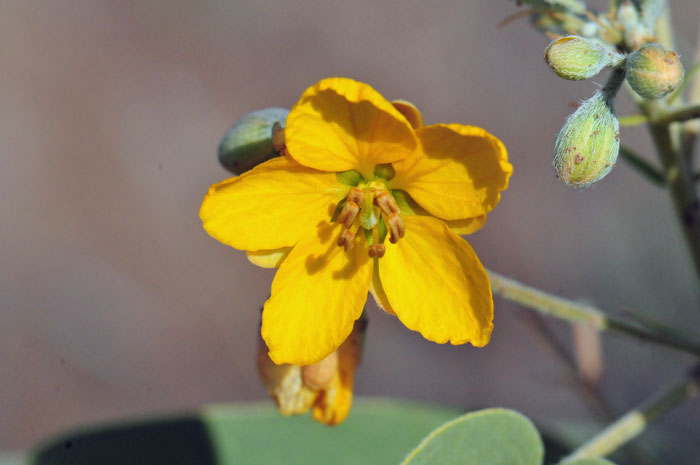
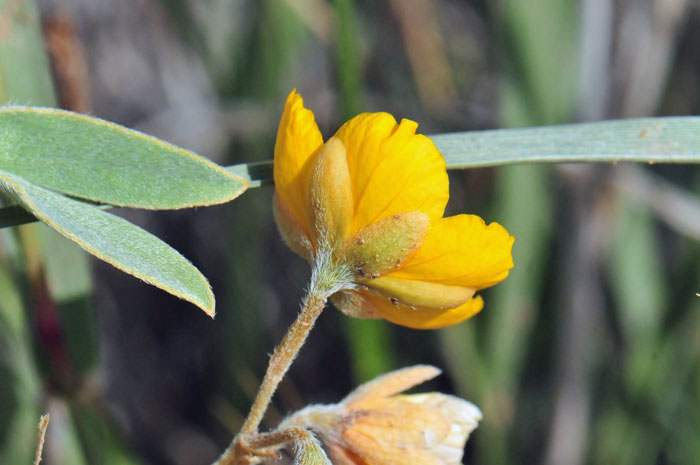
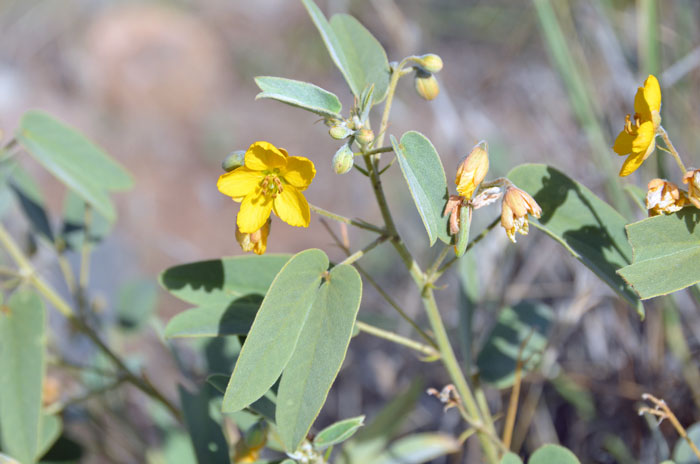
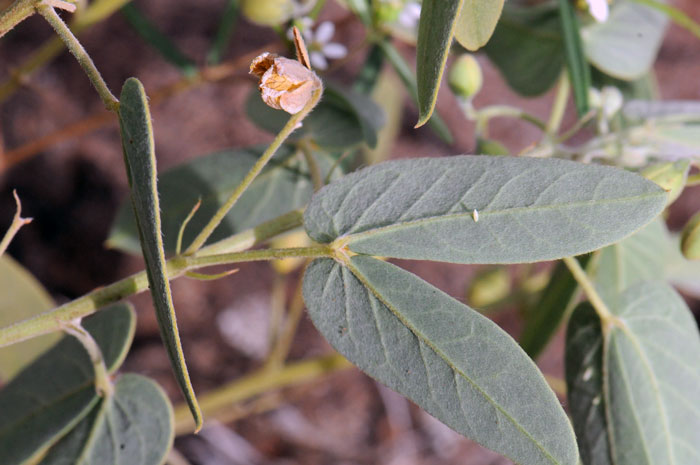
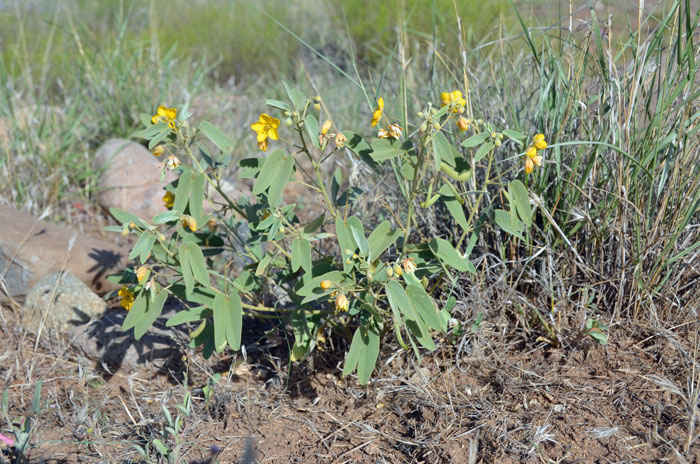
Scientific Name: Senna bauhinioides
Common Name: Twinleaf Senna
Also Called: Shrubby Wild Sensitive-Plant, Twinleaf Senna, Two-leaf Desert Senna (Spanish: daisillo)
Family: Fabaceae or Leguminosae Family
Synonyms: (Cassia bauhinioides, Cassia bauhinioides var. arizonica)
Status: Native
Duration: Perennial
Size: Low growing up to 4 to 16 inches (10-40 cm) or more tall.
Growth Form: Twinleaf Senna is a subshrub or perennial forb/herb; branching; plants with short hairs, (tomentose).
Leaves: Twinleaf Senna has green, grayish-green; covered with soft hairs (tomentose); leaves are compound with twin oblong leaflets.
Flower Color: Twinleaf Senna has yellow flowers in open clusters on short stalks (peduncle) of 1 to 3; the fruit is an oblong pod with soft erect hairs (pubescent); pods with slight constriction between the internal seeds.
Flowering Season: April to August.
Elevation: Approximately 2,000 to 5,500 feet (610 - 1,676 m).
Habitat Preferences: Dry rocky slopes, sandy areas, low desert grasslands, desert shrublands, mesas chaparral vegetation and woods including pinyon/juniper.
Recorded Range: In the United States, Twinleaf Senna is found in Arizona, New Mexico and Texas. In Arizona it occurs in the western and southeastern parts of the state, the south half of New Mexico and western Texas south of New Mexico and mostly east of the Rio Grande River and further south. It is also native to northern and northeast Mexico in Chihuahua, Coahuila, Durango, Sonora and Tamaulipas.
North America & US County Distribution Map for Senna bauhinioides.
North America species range map for Twinleaf Senna, Senna bauhinioides:
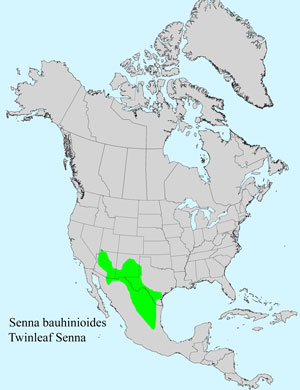
U.S. Weed Information: Unknown
Invasive/Noxious Weed Information: Unknown
Wetland Indicator: Unknown
Threatened/Endangered Information: Unknown
The genus Senna was published in 1754 by Philip Miller (1691-1771).
In the Southwestern United States: Arizona has 14 species of genus, California and New Mexico each have 11 species, Nevada has 3 species, Texas has has 23 species and Utah has 0 species. Data approximate, subject to revision.
Several members of the genus Senna have been re-classified from Cassia.
Comments: Twinleaf Senna has twin oblong leaflets which sets it apart from Coves' Cassia, Senna covesii. The type species of Cassia bauhinioides var. arizonica was collected from the Mule Mountains, Cochise County, Arizona.
Twinleaf Cassia and Coves' Cassia generally occupy the same habitat although Coves' Cassia is much more common at lower elevations. Also, Twinleaf Senna will be observed blooming much later in the year, especially following a heavy monsoon.
Also see in Southwest Desert Flora; Coves' Cassia, Senna covesii, Woolly Senna, Senna hirsuta v glaberrima and Baja California Senna, Senna purpusii.
In addition, according to the Arizona Sonora Desert Museum, "Plant Care Information" notice, Sulphur, Hairstreak and Blue butterflies are attracted to all of the Sennas.
The genus Senna was published in 1754 by Philip Miller (1691-1771).
The species epithet “bauhinioides” is in honor of Swiss herbalist and botanist brothers Gaspard Bauhin (1560-1624) and Jean Johannes Bauhin (1541-1613), both of whom were born in Switzerland.

